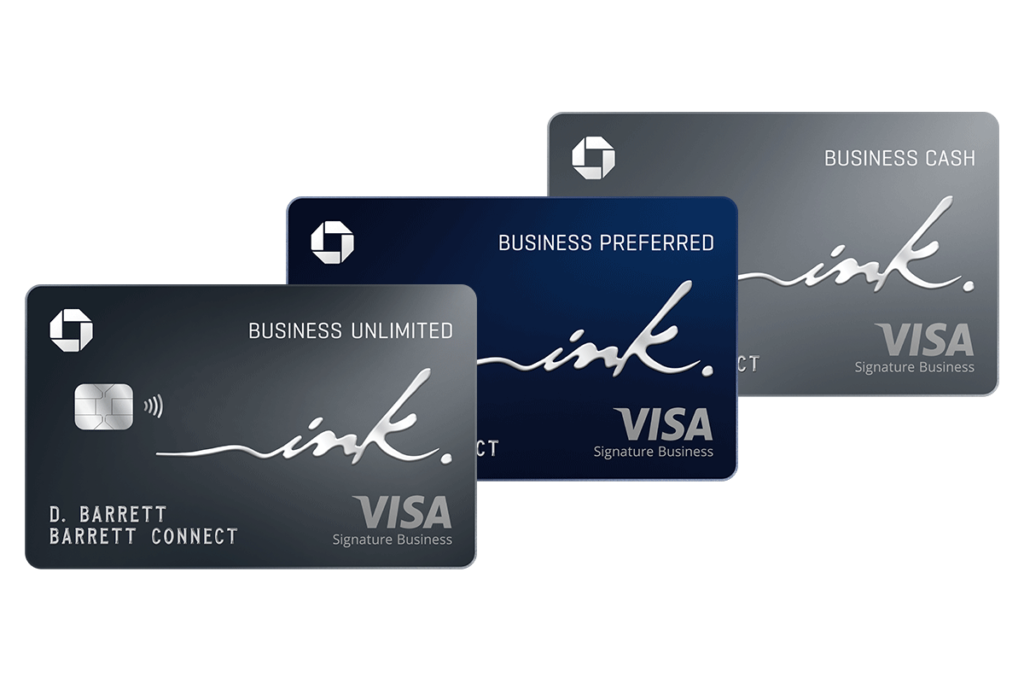What are the steps to take for starting your own business?
Do you dream of being your own boss and achieving financial freedom?
Do you have a great idea for a product or service that can solve a problem or fill a gap in the market?
Do you want to take control of your destiny and create something meaningful and valuable?
If you answered yes to any of these questions, then you are ready to start your own business.
But how do you go from having an idea to launching a successful venture?
What are the steps you need to take to turn your vision into reality?
While it’s challenging to start a business, it’s entirely feasible by adhering to an established procedure and gaining knowledge from experienced professionals who have already accomplished it.
In this guide, we will show you how to start your own business in 2023 in 7 simple steps.
Our guide includes guidance on various topics such as identifying suitable opportunities, drafting a business plan, selecting a legal structure, securing financing, promoting your business, and expanding its reach.
This guide will provide you with a clear roadmap on how to start your own business and achieve your goals.
If you’re interested in selling an online store, opening a physical store, or providing a service, this guide can assist you in beginning your journey correctly. Let’s get started!
- Related Reading:
- How to Make $35 an Hour as a Live Chat Assistant
Step 1: Find the Right Opportunity

To launch a business, the initial step is to discover a suitable opportunity.
What new business now should you start?
How do you know if there is a demand for your product or service?
How do you differentiate yourself from the competition?
Here are some of the most common ways to find a business opportunity:
Solve a problem: Find existing problems and provide innovative solutions that are more efficient, cost-effective, or convenient than the current options available.
Uber is an excellent example of this approach, as it resolved the issue of unreliable and expensive transportation by introducing an app that connects drivers and riders.
Follow your passion: Consider transforming your passion into a viable business venture. To illustrate, if you enjoy baking, you could open a bakery or sell your cakes on the Internet.
Similarly, if you have a penchant for photography, you could establish a photography studio or provide freelance photography services.
Leverage your skills: If you have skills and knowledge in a certain area, consider developing a product or service that meets people’s needs or desires.
For instance, if you enjoy writing, you may start a blog or provide copywriting services. Alternatively, if you have coding expertise, you may create an app or a website.
Identify trends: Search for new and growing trends and opportunities that have not yet been heavily pursued by competitors.
For instance, if you observe a rising interest in eco-friendly fashion, you could consider launching a clothing line that exclusively uses sustainable materials and environmentally-conscious practices.
Research the market: To ensure that your idea is viable, conduct market research. This will help you identify your target customers, their needs and desires, how much they are willing to pay, and who your competitors are.
You can use online tools like Google Trends, Keyword Planner, SurveyMonkey, and Shopify Market Research to gather data and insights.
It’s important to test your business idea before investing a significant amount of time and money into it.
Consider creating a minimum viable product (MVP), which is a simplified version of your product or service that includes enough features to attract early customers and receive feedback.
An additional option to consider is creating a landing page.
This is a webpage that outlines your offer and gathers email addresses from potential customers. Employing these techniques can assist in validating your idea and determining if there is adequate demand for it.
Ready to get your business rolling?

Find a credit card that provides the most benefits for you.
I suggest that if you are beginning your entrepreneurship, you should consider the Chase Ink Business Unlimited credit card as an excellent choice.
In my opinion and based on my experience, this card is a great option for entrepreneurs who are beginning their ventures. You can Get it Here
You Can Earn a $1,000 Bonus Cash Back
After you spend $10,000 on purchases in the first 3 months after the account opening
Cash Back on every purchase
Earn unlimited 1.5% Cash Back on every purchase
With no limits to the amount, you can earn.
You can always redeem for cash back
Your Cash Back rewards don’t expire as long as your account is open.
No annual fee
- Related Reading:
- How to Budget Your Money Wisely
Step 2: Write a Business Plan

A business plan is a written document that outlines the objectives, tactics, and steps you plan to take in order to run your business successfully.
It can assist you in arranging your business ideas well, solidifying your vision, and conveying the unique benefits you offer to potential investors, collaborators, and customers.
Typically, a business plan comprises the following sections:
Executive summary: Can you please provide more context or information about your business idea, goals, mission statement, value proposition, target market, competitive advantage, and financial projections?
I need more details to provide an appropriate response.
Company description: Please provide information about your business structure, history, vision, values, objectives, team members, and location.
Market analysis: We will conduct a thorough analysis of your industry, including the market size and trends, customer segments, competition, and SWOT analysis (strengths, weaknesses, opportunities, and threats).
Product or service description: Please provide more information about your product or service, such as its key features, benefits, what sets it apart from competitors (unique selling proposition), how it’s priced, and any feedback from customers.
This information would help me better understand what your product or service is all about.
Marketing and sales plan: Please provide a detailed plan that outlines how you intend to reach and appeal to your desired customer base, generate leads, convert sales, and maintain customer loyalty.
This plan should include your marketing mix (product, price, place, and promotion), sales funnel, marketing channels, budget, and metrics.
Financial plan: Provide a detailed projection for your income statement, balance sheet, cash flow statement, break-even analysis, and funding requirements.
This will illustrate the amount of funds required to establish and operate your business, how you will allocate them, and how you plan to generate profits to recover the investment.
Appendix: Include any additional information that supports your business plan in an optional section. This can include resumes, permits, contracts, patents, or product samples.
Creating a business plan may appear intimidating, but with online resources like the Shopify Business Plan Generator or Bplans Business Plan Template, it can be made easier to produce a professional and personalized business plan.
Additionally, looking into sample business plans from various industries and niches can be helpful.
- Related Reading:
- How to Make $35 an Hour as a Live Chat Assistant
Step 3: Choose a Business Structure

To move forward with starting your own business, you must decide on a legal structure for it.
This decision will impact various aspects such as how you register your business name, pay taxes, safeguard your intellectual property and personal assets, and raise funds.
The four primary types of business structures are:
Sole proprietorship: The most basic business structure is known as a sole proprietorship, where you have complete control over your business and its profits. But, you are also responsible for all your personal liability and business-related debts and obligations.
Partnership: A partnership is a business structure where multiple individuals share ownership and management. There are two types of partnerships: general and limited.
In a general partnership, all partners have equal rights and responsibilities. In a limited partnership, one or more partners have limited liability and involvement in the business.
Corporation: This message explains that a corporation is a type of business structure where the business is considered its own legal entity separate from its owners.
There are two types of corporations, C corporations, and S corporations. C corporations pay taxes on their income and the owners pay taxes on any dividends they receive.
S corporations do not pay taxes on their income, instead, the business income is passed through to the owners and they pay taxes on their personal income tax returns.
Limited liability company (LLC): An LLC, or Limited Liability Company, is a business structure that blends the characteristics of both corporations and partnerships.
In an LLC, the owners (referred to as members) have limited liability for the company’s debts and obligations. Additionally, the business owner of an LLC can elect to be taxed like a sole proprietorship, partnership, or corporation.
To select the appropriate business structure for your company, you need to consider various factors such as your personal risk tolerance, tax situation, funding requirements, and growth objectives.
If you’re having trouble selecting the appropriate structure for your business, don’t worry.
You can seek assistance from professionals such as lawyers, accountants, or business advisors to guide you in making the right decision based on your circumstances.
Additionally, you can take advantage of online resources like ZenBusiness or LegalZoom to aid you in forming and registering your business structure.
- Related Reading:
- How to Stay Ahead of the Curve in the Digital Finance Revolution
Step 4: Register Your Business Name and Get Licenses and Permits

After selecting a business structure, you must register your business name and obtain any necessary licenses and permits from both the state and local authorities.
Registering the name of your business is crucial for various reasons:
- It protects your business identity and prevents others from using the same or a similar name.
- It allows you to open a business bank account and get a business credit card.
- It helps you build brand recognition and credibility with your customers.
Depending on your business structure and location, there are various methods for registering your business name.
- It is possible for sole proprietors or partnerships to register their business name under a trade name or a fictitious name (also referred to as a DBA, standing for “doing business as”). This process can be carried out in an easy and cost-effective manner either online or in person at your local county clerk’s office.
- If your business is an LLC, corporation, or an S corporation, you can register its name as part of the formation documents with your state’s secretary of state office. This will make sure that your business name is distinct and not already in use in your state.
- To use your business name across the country and operate in multiple states or protect your business name nationwide, consider registering it as a trademark with the U.S. Patent and Trademark Office (USPTO). This will grant you exclusive rights to use your business name across the country.
To start a business and operate your business legally and safely, it is important to obtain the necessary licenses and permits.
Depending on your business’s location, industry, and activities, you may require different types of licenses and permits. These could include:
A business license is a permit that authorizes you to conduct business in a specific city or county.
Professional license: A license is a certification that proves your expertise and abilities in a particular profession or occupation, such as accounting, law, medicine, or cosmetology.
Zoning permit: A permit that confirms your business location meets the standards and rules set by local zoning laws.
Health permit: You need a permit to certify that your business complies with health and safety regulations for food handling, sanitation, disposal of waste, and other related aspects.
Sales tax permit: You need to obtain a permit that will authorize you to collect and pay the appropriate amount of sales tax on the goods and services that you offer for sale.
Environmental permit: A permit is required to ensure that your business complies with environmental laws and regulations regarding air quality, water quality, waste management, and other related matters.
You can use the SBA’s Business Licenses & Permits Search Tool or LicenseSuite online to determine which licenses and permits are necessary for your business.
Additionally, you can reach out to your state’s licensing agency or the local chamber of commerce for further details.
Step 5: Get Funding for Your Business

To start and expand a business, you need money.
If you do not have a separate business bank account or sufficient savings or personal funds to finance your business, you will have to seek financial support from external sources.
There are two main types of funding for small business owners: debt financing and equity financing.
Debt financing: To obtain debt financing for your business, you can borrow money from a bank, credit union, or online platform. This loan must be paid back with interest and fees within a specific time frame.
While you maintain complete ownership and control of your business, repayment is mandatory regardless of how well your business is doing. Additionally, you may need to provide collateral or a personal guarantee.
Equity financing: Equity financing involves selling a portion of your business to an investor, which could be an angel investor, a venture capitalist, or a crowdfunding platform.
In return for the investment, you’ll need to relinquish some of your control and ownership of the business.
The benefit of equity financing is that you’re not required to repay the investment and can take advantage of the investor’s network and expertise.
However, the downside is that you’ll have to share your profits and decision-making authority with your investors.
To determine the most suitable funding option for your business, you should consider various factors including the stage of your business, the amount of funding required, your growth prospects, your willingness to take risks, and your personal preferences.
Small businesses often rely on these sources of funds:
Personal savings: Using personal savings is a common and simple way to finance your business. This involves utilizing funds from your savings account, retirement account, or other assets to kickstart or expand your business.
The benefit is that you won’t have to pay interest or sacrifice equity. However, the drawback is that you may not have enough funds or you may jeopardize your personal finances.
Friends and family: One common and simple method of financing your business is by asking your friends and family to lend you money or invest in your business.
The benefit of using this method is that your loved ones may provide you with excellent terms and support. Nevertheless, if things go awry, there is a chance that you may jeopardize personal relationships.
Credit cards: Using personal or business credit cards to pay for your business expenses or buy inventory is a fast and convenient funding option.
Credit cards are easy to obtain and widely accepted. However, they come with high-interest rates and fees, and missing payments can harm your credit score.
Bank loans: Applying for a bank loan from a local or national bank that offers small business loans is a reliable and conventional way to fund your business.
However, you will have to submit a business plan, financial statements, tax returns, and other documents to prove your creditworthiness and ability to repay.
While bank loans offer longer repayment terms and lower interest rates than credit cards, they are difficult to qualify for and may require collateral or a personal guarantee.
SBA loans: An SBA loan is a type of bank loan supported by the federal agency, Small Business Administration, which provides assistance to small businesses.
These loans offer better terms and conditions than regular bank loans, such as lower interest rates, longer repayment terms, and lower down payments.
The benefit of opting for an SBA loan is that it is easier to qualify for and more flexible than a regular bank loan. However, these loans may still require a lot of paperwork and processing time.
Online lenders: A quick and modern option to finance your business is by applying for an online loan through platforms like Kabbage, LendingClub, or OnDeck. These platforms connect borrowers with lenders.
To apply, you’ll need to provide basic information about yourself and your business, such as revenue, credit score, and bank account details.
Online lenders offer simpler application processes and faster approval times than banks, but they also have higher interest rates and fees, and shorter repayment terms.
Angel investors: Pitching your business idea to an angel investor is an exciting and rewarding way to secure funding for your startup. These individuals use their own money to invest in early-stage startups, in exchange for equity.
You can find them through online platforms like AngelList, networks such as the Angel Capital Association, or events like Startup Grind. While angel investors can offer valuable advice, feedback, and connections, it can be challenging to locate them and their expectations and interests may differ from yours.
Venture capitalists: Pitching your business idea to a venture capitalist is a highly competitive and challenging method to secure funding. Venture capitalists are firms that offer substantial investment to high-growth startups in exchange for equity.
To find venture capitalists, you can use online platforms such as Crunchbase, and networks like the National Venture Capital Association, or attend events like TechCrunch Disrupt.
The benefit of working with venture capitalists is their ability to provide substantial funding, resources, and guidance. However, it’s essential to note that they are highly selective and demanding, meaning they may maintain more control and influence over your business than you.
Crowdfunding: Crowdfunding is a viable method to gather funds for your business. By creating a crowdfunding campaign on sites like Kickstarter, Indiegogo, or GoFundMe, you can present your product or service and request contributions or pre-orders from people.
Crowdfunding allows you to attain financial support from a broad audience that is intrigued by your concept and receive market validation and insights. However, you need to develop a persuasive campaign and provide rewards or incentives to gain backers.
When deciding on the ideal funding source for your business, factors such as the required amount, desired speed of acquisition, level of comfort with sharing ownership and control, and faith in your business potential must be taken into account.
Step 6: Market Your Business

To successfully attract and keep customers, establish brand awareness and a good reputation, and increase profits, it’s important to market your business.
This entails developing and implementing various strategies and tactics that provide value to your target audience.
Search engine marketing: To increase visibility and traffic on your website, you need to optimize it for search engines (SEO) and also run paid search engine ads (SEM).
Social media marketing: To expand your online presence and interaction, you can use two methods: creating and posting content on social media without paid promotion (organic posting), or running paid advertisements on social media (paid ads).
Email marketing: To increase your conversions and loyalty, you need to send different types of emails to your subscribers (nurture emails), prospects (trigger emails), and customers (engagement emails).
Word-of-mouth marketing: To improve credibility, you can ask your customers to write reviews and refer new customers to your business. You can even offer rewards for successful referrals.
Content marketing: This means producing and circulating useful materials such as websites, blog articles, ebooks, and reports to educate, inform, entertain, or motivate your target audience. The goal is to generate potential customers or sales.
Offline marketing: This refers to increasing your business’s exposure and network through offline methods such as events, sponsorships, and trade shows for promotional purposes.
To develop a successful marketing strategy for your business, it is important to establish your marketing objectives, recognize your intended audience, create a unique selling point, select appropriate marketing platforms, allocate your budget, and evaluate your performance.
To create a professional and customized marketing plan, consider utilizing online tools like HubSpot Marketing Plan Generator or CoSchedule Marketing Plan Template.
Additionally, you can observe successful marketing campaigns from various industries and niches for reference.
Step 7: Scale Your Business

To scale your business, you need to grow your revenue and market share in a sustainable and profitable way without compromising your quality, efficiency, or customer satisfaction.
It’s important to understand that scaling and growing your business are two different things.
Growing your business involves adding resources and expenses as your business grows and sales and customer base expand.
Scaling, on the other hand, involves utilizing your current resources and streamlining your processes to increase sales and customers without a significant increase in costs.
The importance of scaling your business cannot be overstated for various reasons.
- It helps you achieve your long-term vision and goals.
- It helps you gain a competitive edge and dominate your niche.
- It helps you increase your profitability and cash flow.
- It helps you create more value for your customers and stakeholders.
- It helps you attract and retain top talent and partners.
To successfully expand your business, it’s important to plan and execute carefully.
This includes having a well-defined strategy, a business model capable of growth, a capable team, a loyal customer base, and a sturdy infrastructure.
Here are some effective steps to scale your business.
Plan properly: To expand your business successfully, it’s important to have a clear plan.
Set realistic goals with measurable outcomes, establish your key performance indicators (KPIs), and create a detailed action plan.
Before getting started, take time to assess your strengths and weaknesses, identify opportunities and threats, and evaluate potential risks and challenges.
Secure financial support: If you want to scale your business, you might need more money to cover things like hiring, marketing, technology, and inventory.
To be prepared, create a financial plan that details how much money you need, how you’ll spend it, and how you’ll earn it back.
Additionally, consider different options for funding such as investors, loans, business grants, or crowdfunding, and choose the one that is best suited to your needs.
Set realistic and clear targets: To expand your business, you must establish challenging yet realistic objectives for yourself and your team.
This involves dividing your larger goals into smaller, more specific, quantifiable, reachable, relevant, and time-bound (SMART) tasks and benchmarks.
Additionally, you should communicate your objectives clearly to all those involved and keep track of your progress regularly.
Consider the best options for growth: To scale your business, you must select the most effective methods for increasing your market presence and customer reach.
This involves exploring various growth opportunities, such as introducing new products or services, exploring new markets or customer groups, collaborating with other businesses or organizations, or licensing/franchising your brand. Your choices should be consistent with your beliefs and objectives.
Change the internal culture: To scale your business, it’s important to shift the way you and your team operate.
This involves establishing a culture that promotes innovation, collaboration, agility, accountability, and excellence.
Additionally, you should give your team the freedom to make decisions, try new things, and learn from mistakes. It’s also important to acknowledge and reward innovation and successful initiatives.
Standardize the product: To grow your business, it’s important to maintain a consistent level of quality, efficiency, and customer satisfaction.
This can be achieved by standardizing your products or services through documenting and streamlining your processes, automating or outsourcing non-essential tasks, implementing quality control measures, and setting up feedback mechanisms.
Additionally, it’s crucial to train and equip your team with the best practices and standards.
Monitor progress and adjust: To successfully scale your business, you must keep track of your progress and adapt your strategy accordingly.
This involves measuring your performance against your goals and KPIs, collecting and analyzing feedback from customers and stakeholders, and addressing any problems that arise. It is also essential to regularly review and update your plan while being open to making necessary changes.
Scaling your business is a continuous process that requires flexibility, adaptability, and resilience to overcome challenges and take advantage of growth opportunities.
Final Thoughts On Starting a Business
To achieve success in starting and growing your own business, it’s important to follow a proven process that covers all the essential aspects while being aware of the challenges and risks that come with it.
We’ve presented you with a guide that outlines 7 simple steps to help you kickstart your business in 2023.
- Find the right opportunity
- Write a business plan
- Choose a business structure
- Register your business name and get licenses and permits
- Get funding for your business
- Market your business
- Scale your business
These steps will help you turn your idea into a reality and create value for your customers, which will enable you to achieve your goals.
If you have any questions or feedback, please don’t hesitate to reach out to us. We hope our guide provided helpful and informative information for you. Output Language Code: EN-US
Frequently Asked Questions
Q: How much money do I need to start my own business?
A: The best course of action for you will vary depending on factors such as your business type and size, as well as your personal and financial circumstances.
Starting a business can require varying amounts of money. For instance, businesses like online businesses, freelancing, or consulting can be started with little or no money.
However, businesses such as retail stores, restaurants, or manufacturing might need more money to cover expenses such as equipment, inventory, rent, licenses, etc.
In order to determine the amount of money required to start your own business, you should figure out the total of your startup expenses and ongoing operating costs.
Before starting your business, you’ll need to spend money on one-time expenses known as startup costs. These may include market research, legal fees, branding, website development, and more.
To run your business, you will have ongoing costs known as operating expenses, which include expenses like rent, utilities, payroll, marketing, and more.
To estimate your startup costs and operating expenses, check out online tools such as Shopify Business Startup Cost Calculator or Bplans Startup Cost Calculator.
There are examples available for startup costs and operating expenses for various types of businesses that you can refer to.
Q: How do I choose a name for my business?
A: To create a successful brand, it’s crucial to carefully select a name for your own business entity. Your choice can impact your brand identity, customer opinion, and legal protection. Here are some guidelines to help you in that process.
- Make it memorable: Your name should be easy to remember and pronounce. Avoid using too many words, numbers, hyphens, or acronyms that may confuse your customers.
- Make it meaningful: Your name should reflect your value proposition, mission statement, or unique selling proposition. It should convey what you do and why you do it.
- Make it original: Your name should be unique and distinctive. Avoid using generic or common words that may be used by other businesses in your industry or niche.
- Make it available: Your name should be available for registration as a domain name and a trademark. You can use online tools like Namecheap Domain Name Search or USPTO Trademark Search to check the availability of your name.
Q: How do I write a business plan?
A: A business plan is a written document that explains your business goals, strategies, and action plans.
It can help you structure your ideas, clarify your vision, and explain your value proposition to potential investors, partners, or customers.
The sections that are usually present in a business plan are:
Please provide a brief overview of your business idea, goals, mission statement, value proposition, target market, competitive advantage, and financial projections in an executive summary.
- Company description: A detailed description of your business structure, history, vision, values, objectives, team members, and location.
- Market analysis: A comprehensive analysis of your industry, market size and trends, customer segments, competitor analysis, and SWOT analysis (strengths, weaknesses, opportunities, and threats).
- Product or service description: A detailed description of your product or service, including its features, benefits, unique selling proposition (USP), pricing strategy, and customer feedback.
- Marketing and sales plan: A comprehensive plan for how you will reach and attract your target customers, generate leads, convert sales, and retain customers. This section should include your marketing mix (product, price, place, and promotion), your sales funnel, your marketing channels, your budget, and your metrics.
- Financial plan: A realistic projection of your income statement, balance sheet, cash flow statement, break-even analysis, and funding requirements. This section should show how much money you need to start and run your business, how you will spend it, and how you will make it back.
- Appendix: An optional section that contains any additional information that supports your business plan, such as resumes, permits, contracts, patents, or product samples.
To create a professional and unique business plan, try using online tools such as the Shopify Business Plan Generator or Bplans Business Plan Template.
Additionally, you can browse successful business plan examples from various industries and niches.
Q: How do I market my business?
A: To attract and keep customers, build brand recognition and reputation, and boost sales and profits, it’s essential to market your business.
To successfully market your business, you need to use different strategies and tactics that provide value to your target audience. Some of the most commonly used strategies include:
- Search engine marketing: This involves optimizing your website for search engines (SEO) and running paid ads on search engines (SEM) to increase your visibility and traffic.
- Social media marketing: This involves creating and sharing content on social media platforms (organic posting) and running paid ads on social media platforms (paid ads) to increase your reach and engagement.
- Email marketing: This involves sending emails to your subscribers (nurture emails), prospects (trigger emails), and customers (engagement emails) to increase your conversions and loyalty.
- Word-of-mouth marketing: This involves encouraging your customers to spread the word about your business (reviews) and rewarding them for referring new customers (referrals) to increase your trust and credibility.
Content marketing: This involves creating and distributing valuable content (website, blog, etc.) to educate and engage your target audience.
These strategies can help you reach more potential customers and build relationships with them, which can ultimately lead to increased sales and profits.
It’s important to remember that each strategy needs to be tailored specifically for your business in order to yield the most effective results.














